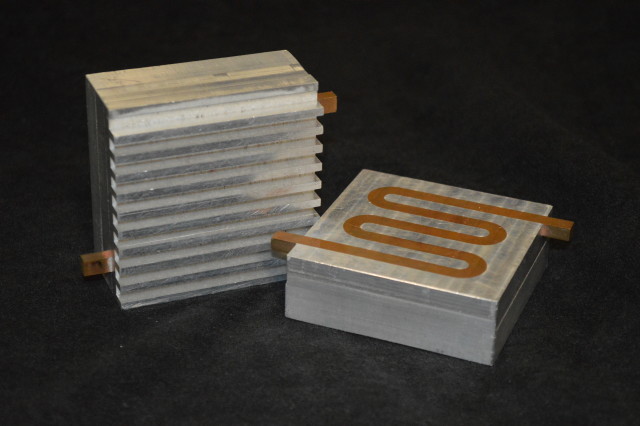Fabrisonic, a company based in Columbus Ohio, has a different approach to metal 3-D printing.
When most people think of metal AM, they think of powder bed metal printing, a process where layers of powdered metal are laser-sintered one at a time until an object is formed. Fabrisonic’s approach uses thin films of metal foil, which it prints layer by layer, then adds rapid vibration and a little subtractive machining for good measure.
After spending two years perfecting its technology, Fabrisonic was formed in 2011 with funding from Ohio’s Third Frontier fund.
“We’re doing metal 3-D printing,” said company founder and CEO Mark Norfolk.
Vibrations are sent through the layers at 20,000 per second, which is enough to push oxygen molecules off of the metal. This allows the metal molecules to touch. And when they touch they bond.
“Metals inherently like to stick to other metals,” according company founder and CEO Mark Norfolk. “If you have two pieces of completely clean metal in outer space and you slap them together with your hands, you will form a solid state bond. It will be just like solid metal.”
Fabrisonic can build any internal compartments or passageways that required by a specific design. They also claim to be able to embed in that same piece of carbon fiber, ceramic, wiring — even integrated circuits and fiber optic strands of glass into a metal component. The initial process allows Fabrisonic to print near net shape, and then they use CNC machines to cross the finish line to the final shape. So it’s both an additive and subtractive manufacturing process.
Norfolk hasn’t found a metal he can’t use in his new process (with the exception of lead) – he can even can weld together metals with very different properties such as steel and aluminum. The process doesn’t melt or heat up the materials substantially enough to affect metallurgy, conductivity or magnetic properties.
Read more at ENGINEERING.com


